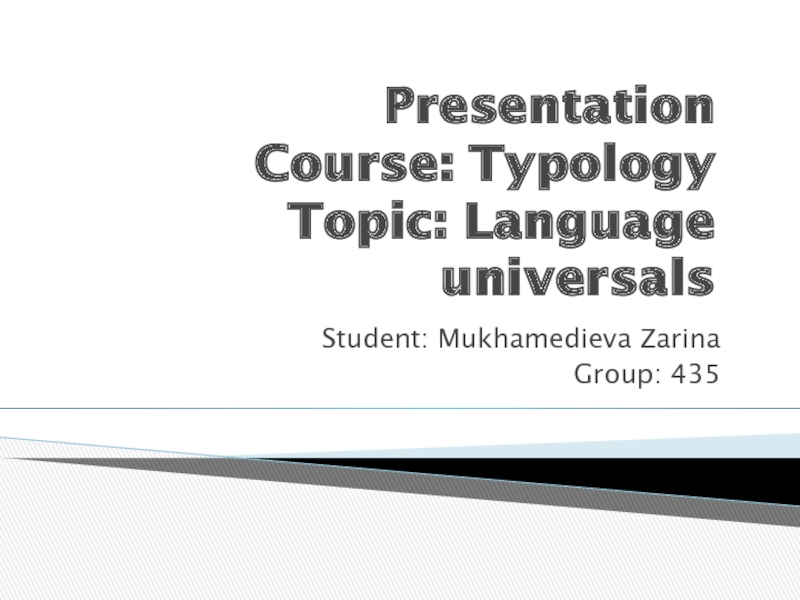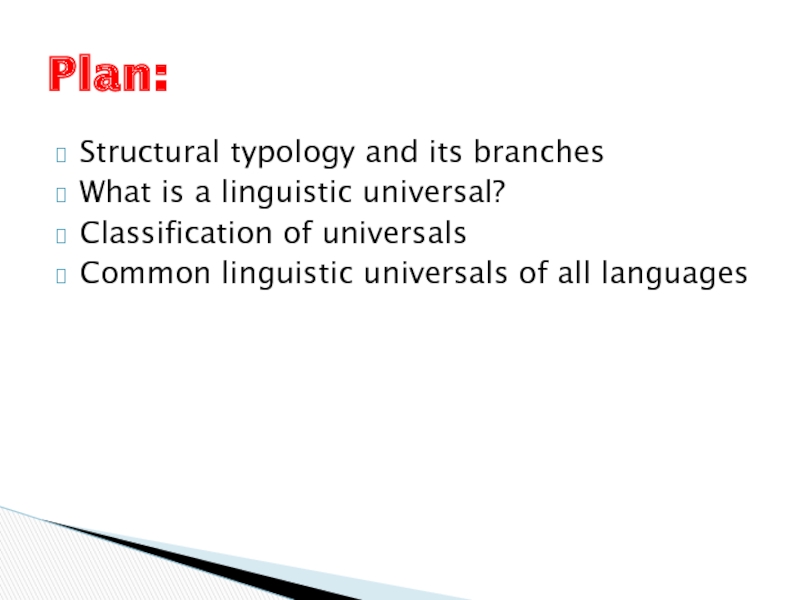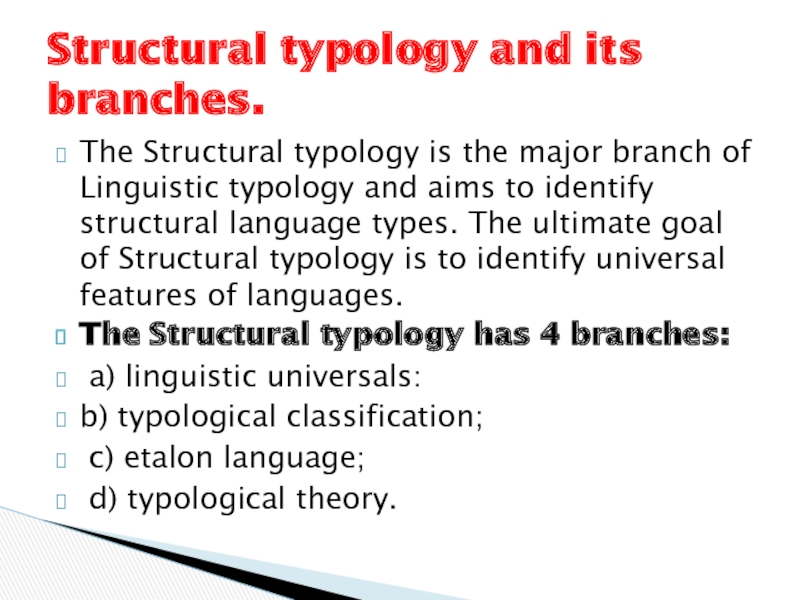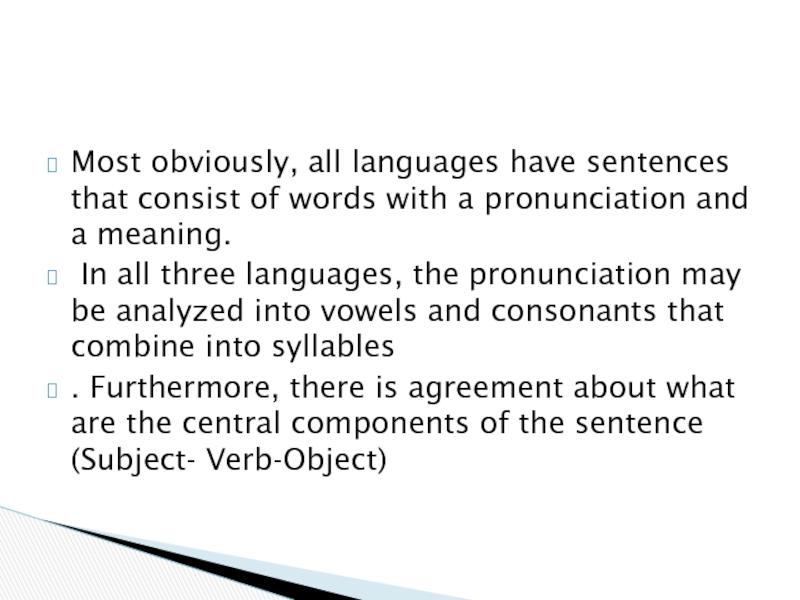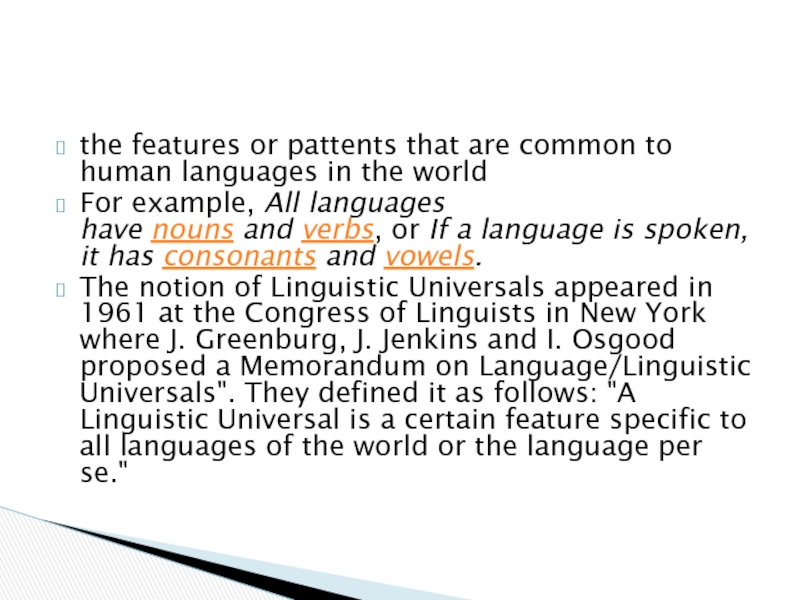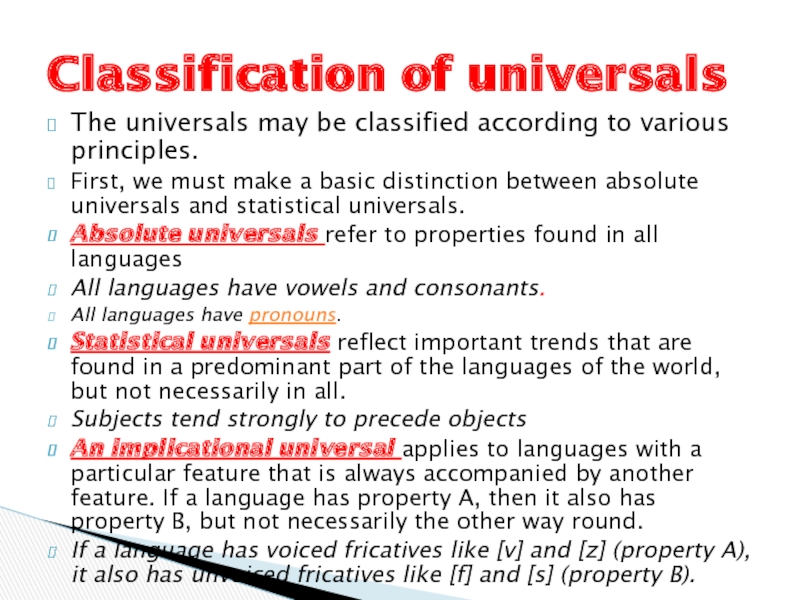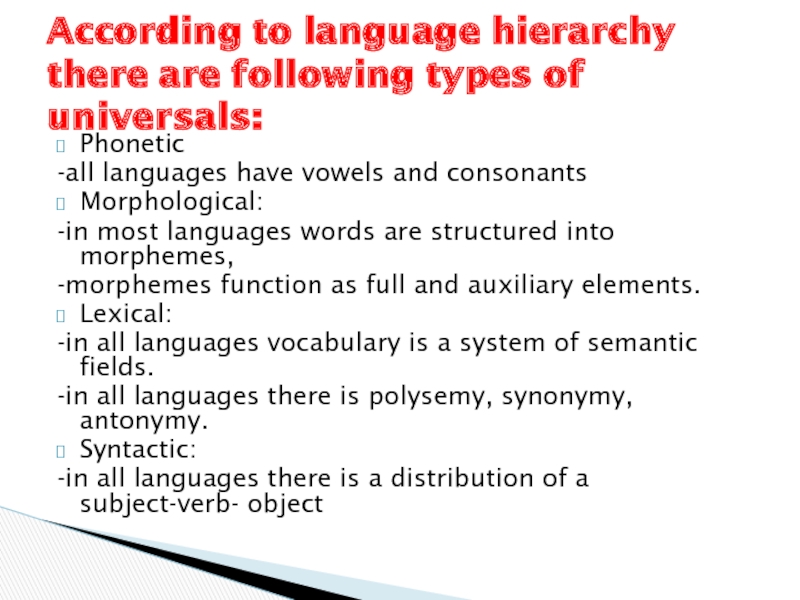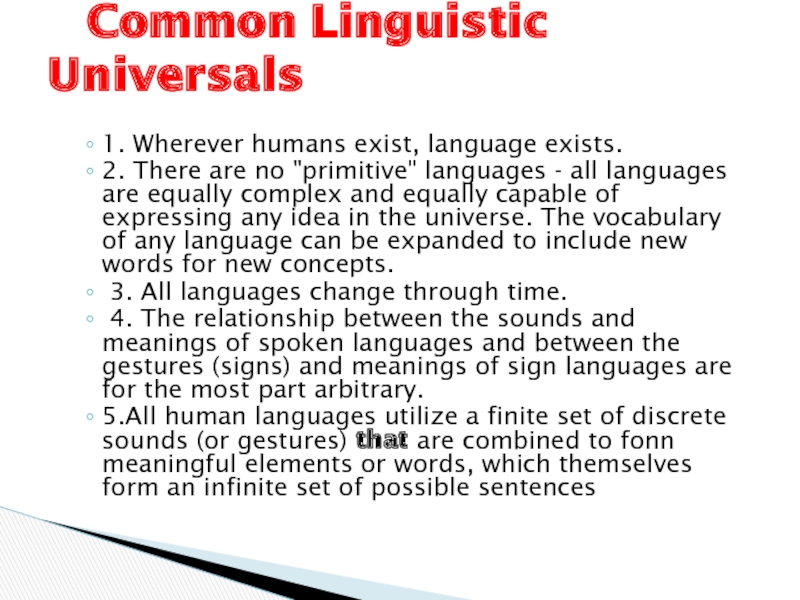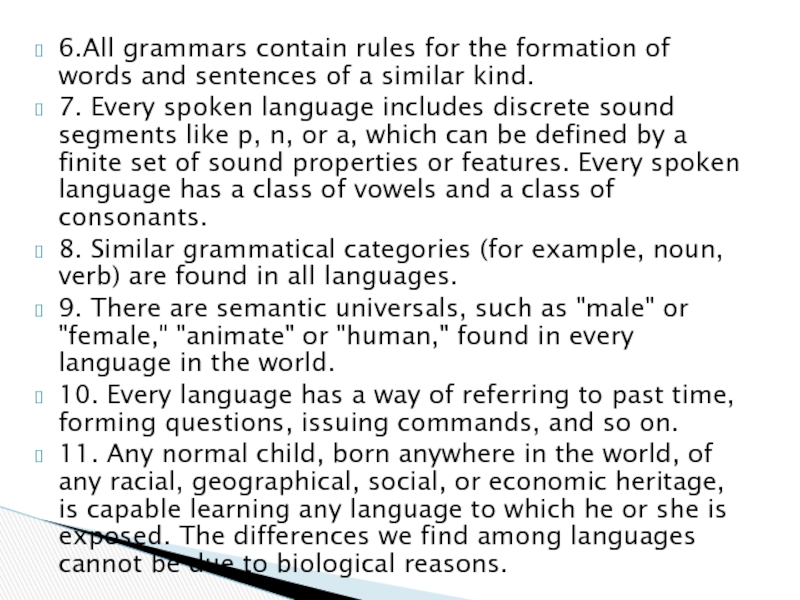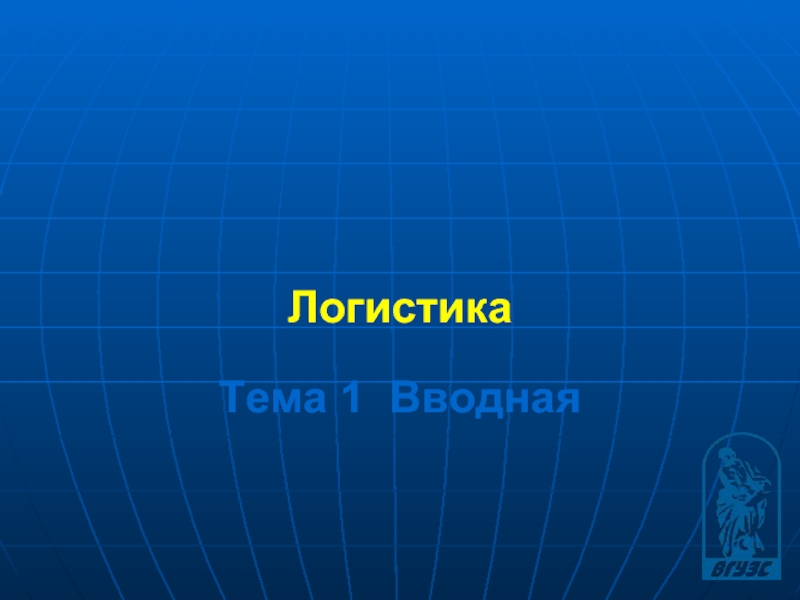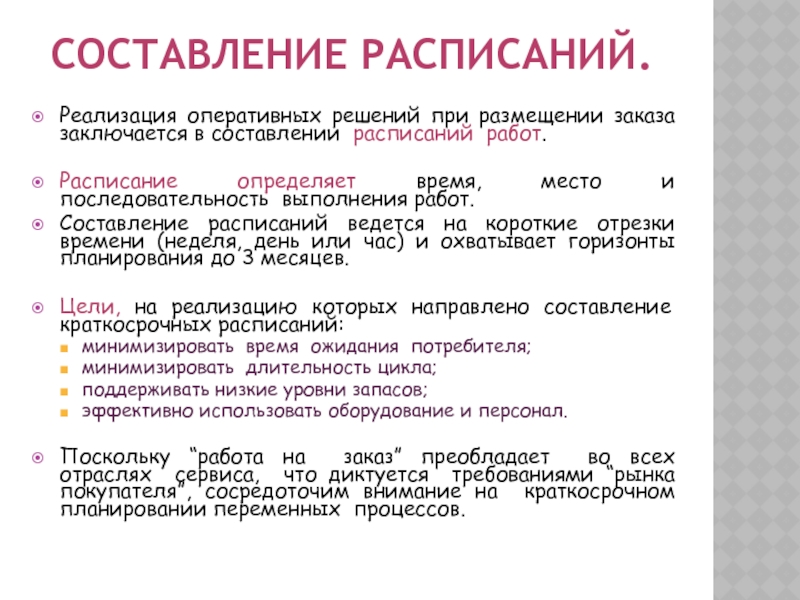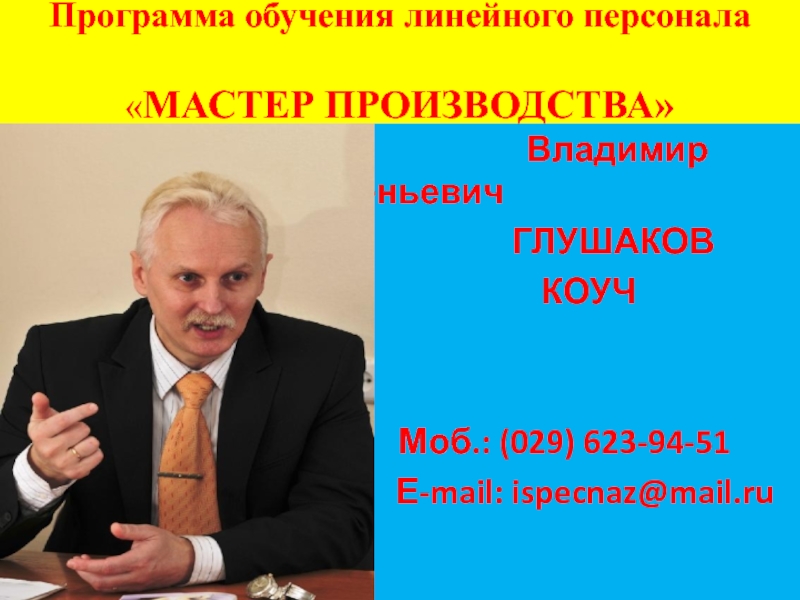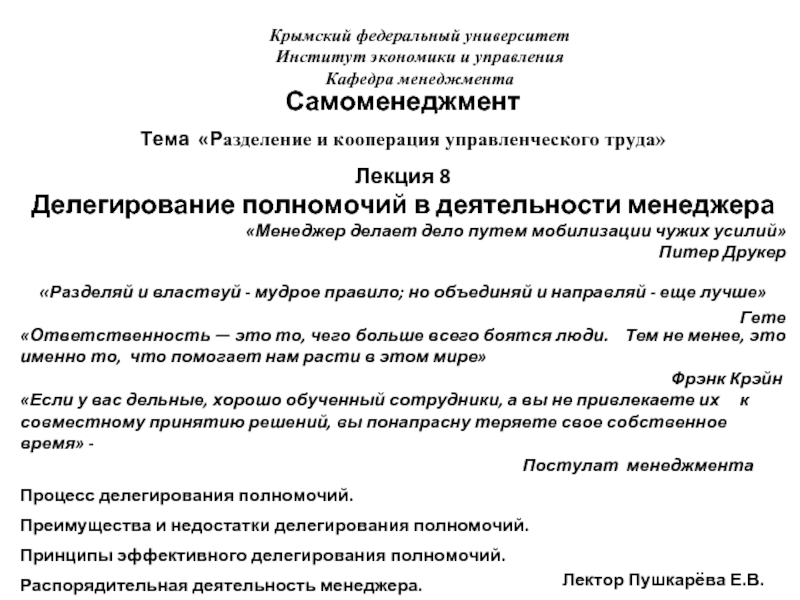- Главная
- Разное
- Дизайн
- Бизнес и предпринимательство
- Аналитика
- Образование
- Развлечения
- Красота и здоровье
- Финансы
- Государство
- Путешествия
- Спорт
- Недвижимость
- Армия
- Графика
- Культурология
- Еда и кулинария
- Лингвистика
- Английский язык
- Астрономия
- Алгебра
- Биология
- География
- Детские презентации
- Информатика
- История
- Литература
- Маркетинг
- Математика
- Медицина
- Менеджмент
- Музыка
- МХК
- Немецкий язык
- ОБЖ
- Обществознание
- Окружающий мир
- Педагогика
- Русский язык
- Технология
- Физика
- Философия
- Химия
- Шаблоны, картинки для презентаций
- Экология
- Экономика
- Юриспруденция
Linguistic universals презентация
Содержание
- 1. Linguistic universals
- 2. Structural typology and its branches What is
- 3. The Structural typology is the major branch
- 4. The differences between languages are many. The
- 5. Most obviously, all languages have sentences
- 6. the features or pattents that are common
- 7. The universals may be classified according to
- 8. Phonetic -all languages have vowels and
- 9. 1. Wherever humans exist, language exists. 2.
- 10. 6.All grammars contain rules for the formation
- 11. Thank you for your attention!
Слайд 1
Presentation
Course: Typology
Topic: Language universals
Student: Mukhamedieva Zarina
Group: 435
Слайд 2Structural typology and its branches
What is a linguistic universal?
Classification of universals
Common
Plan:
Слайд 3The Structural typology is the major branch of Linguistic typology and
The Structural typology has 4 branches:
a) linguistic universals:
b) typological classification;
c) etalon language;
d) typological theory.
Structural typology and its branches.
Слайд 4The differences between languages are many. The pronounciation of each word
In spite of all the differences, however, languages still have a lot in common.
What is a linguistic universal?
Слайд 5
Most obviously, all languages have sentences that consist of words with
In all three languages, the pronunciation may be analyzed into vowels and consonants that combine into syllables
. Furthermore, there is agreement about what are the central components of the sentence (Subject- Verb-Object)
Слайд 6the features or pattents that are common to human languages in
For example, All languages have nouns and verbs, or If a language is spoken, it has consonants and vowels.
The notion of Linguistic Universals appeared in 1961 at the Congress of Linguists in New York where J. Greenburg, J. Jenkins and I. Osgood proposed a Memorandum on Language/Linguistic Universals". They defined it as follows: "A Linguistic Universal is a certain feature specific to all languages of the world or the language per se."
Слайд 7The universals may be classified according to various principles.
First, we must
Absolute universals refer to properties found in all languages
All languages have vowels and consonants.
All languages have pronouns.
Statistical universals reflect important trends that are found in a predominant part of the languages of the world, but not necessarily in all.
Subjects tend strongly to precede objects
An implicational universal applies to languages with a particular feature that is always accompanied by another feature. If a language has property A, then it also has property B, but not necessarily the other way round.
If a language has voiced fricatives like [v] and [z] (property A), it also has unvoiced fricatives like [f] and [s] (property B).
Classification of universals
Слайд 8Phonetic
-all languages have vowels and consonants
Morphological:
-in most languages words are
-morphemes function as full and auxiliary elements.
Lexical:
-in all languages vocabulary is a system of semantic fields.
-in all languages there is polysemy, synonymy, antonymy.
Syntactic:
-in all languages there is a distribution of a subject-verb- object
According to language hierarchy there are following types of universals:
Слайд 91. Wherever humans exist, language exists.
2. There are no "primitive" languages
3. All languages change through time.
4. The relationship between the sounds and meanings of spoken languages and between the gestures (signs) and meanings of sign languages are for the most part arbitrary.
5.All human languages utilize a finite set of discrete sounds (or gestures) that are combined to fonn meaningful elements or words, which themselves form an infinite set of possible sentences
Common Linguistic Universals
Слайд 106.All grammars contain rules for the formation of words and sentences
7. Every spoken language includes discrete sound segments like p, n, or a, which can be defined by a finite set of sound properties or features. Every spoken language has a class of vowels and a class of consonants.
8. Similar grammatical categories (for example, noun, verb) are found in all languages.
9. There are semantic universals, such as "male" or "female," "animate" or "human," found in every language in the world.
10. Every language has a way of referring to past time, forming questions, issuing commands, and so on.
11. Any normal child, born anywhere in the world, of any racial, geographical, social, or economic heritage, is capable learning any language to which he or she is exposed. The differences we find among languages cannot be due to biological reasons.
